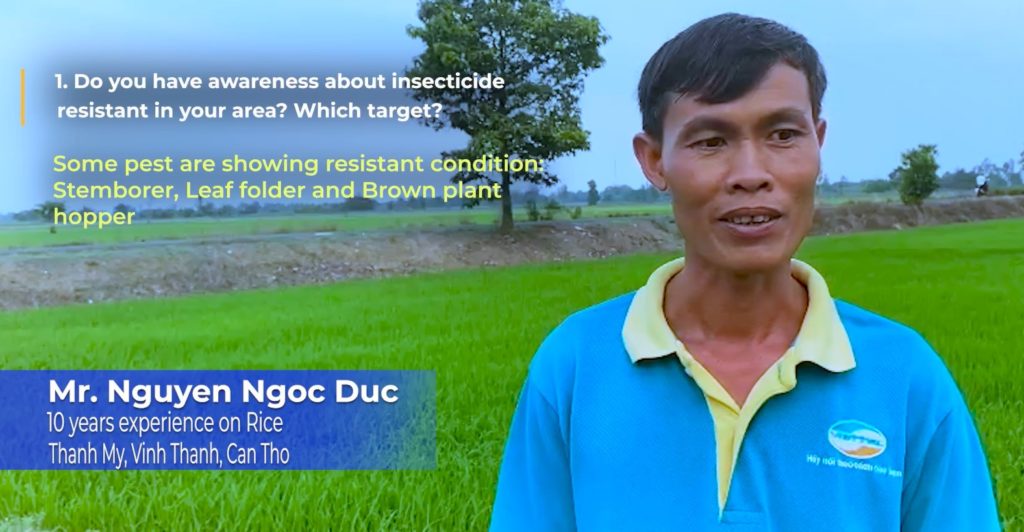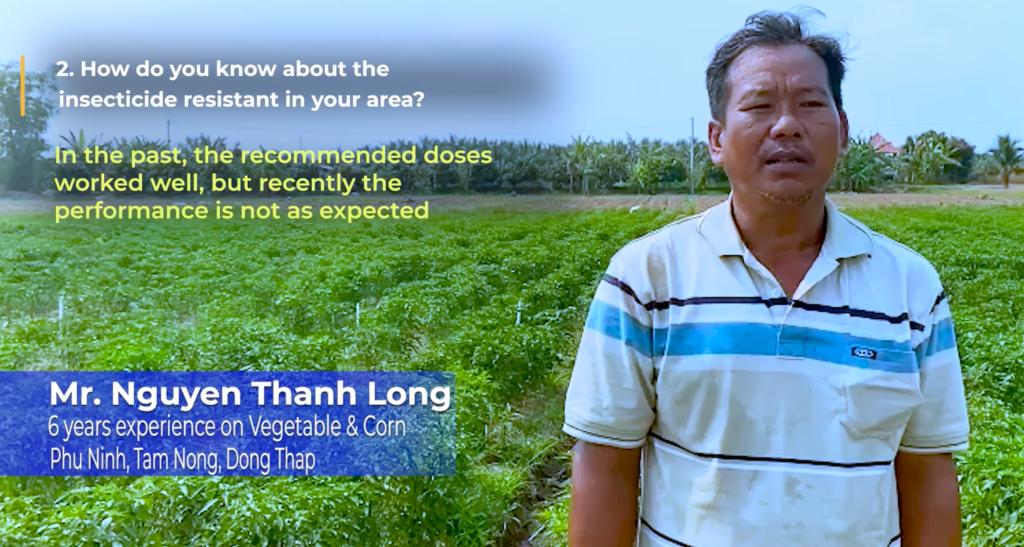Sucking Pests Team News
-
IRAC Guidance: Factors involved with lower-than-expected insecticide field performance are often not related to insecticide resistance.
Unexpected crop damage by a pest after a foliar application of an insecticide has been made is often firstly assumed to be because of pest resistance, but commonly there are many other factors why insecticide applications can fail to meet expectations. Before associating insecticide resistance as the reason for crop failure, commonly made mistakes regarding application decisions and practices should be excluded. Many of the reasons for control failures can be avoided by reading product labels carefully and by following label instructions fully. This guideline outlines some of the key factors and considerations for foliar applications of insecticides.
-
New versions (11.1, January 2024) of the IRAC MoA classification and associated resources have just been released and posted on the website.
The Changes include the following updates:
Group 4E Nicotinic acetylcholine receptor (nAChR) competitive modulators – New Active: Fenmezoditiaz
Group 23: Inhibitors of acetyl-CoA carboxylase – New Active: Spidoxamat.
Group 35 RNA Interference mediated target suppressors New Group and Active: Ledprona
Group UNF Fungal agents of unknown or uncertain MoA New Fungal Agent added: Akanthomyces muscarius Ve6Resources:
-
Insecticide Mixtures and Resistance Management – Updated Guidance
The combined application of two insecticides with different modes of action (MoA) is an increasingly common approach to insect pest management. Insecticide mixtures (tank-mix or pre-formulated mixture) are applied to crops for pest management for many different reasons. These reasons include to broaden spectrum, to combine different technical characteristics of insecticides, or to combine two modes of action to control species where single compound applications do not provide sufficient control. Mixing insecticides, may also offer a benefit for insecticide resistance management (IRM). In the guidance document IRAC presents an up-dated mixture statement and the key considerations supporting it.
-
IRAC Vietnam takes up the challenge to improve farmer IRM
For farmers in Vietnam, the agricultural environment is very dynamic. Changes in weather patterns, consumer behavior, the availability of labor, the availability of crop protection products, and the crop pest patterns, require farmers to adjust their agricultural practices to sustain and improve both crop quantity and quality. Badly adopted cultivation practices can lead to increasing problems with insecticide resistance.
Farmers in Vietnam (VN) are experiencing increasing insecticide resistance, rendering their efforts in crop protection inefficient even though they can choose between more than 1500 different insecticide brands, which represent over 600 different active ingredients. If the offer is so diversified, why are farmers running into trouble? The key question is, how to decide which product to use? Interviews with farmers reveal that most believe that they should rotate different products, for insecticide resistance management (IRM).



This shows that farmers are clearly lacking available, essential IRM guidance.
- For rotation, farmers need to know how to select best-fit products, among dozens of hundreds of available insecticides brands, to use.
- Product rotation should be associated with insect generations and the product’s mode of action (MoA) which is indicated by IRAC group numbers.
- The product MoA should be printed on product labels in a standardized manner, including essential information on IRM, as proposed by IRAC and CropLife International. So far, MoA labelling is still only optional for VN manufacturers.
IRAC VN, in association with CropLife VN, are engaging to help farmers to better manage insecticide resistance in the future and planning to:
- be fully committed to comply with IRAC guidance (MoA icon, IRM statement)
- encourage all VN pesticide manufacturers to implement MoA labelling practice
- engage the VN Government agency to make MoA labelling mandatory
- create online IPM, RM, RAC guidance resources in Vietnamese
- establish train-the-trainer programs together with CropLife VN, government agencies, and other stake holders to increase IRM awareness and practice
-
Updated guidelines for rotating seed treated, soil and foliar applied insecticides
The general principles of resistance management apply to seed and soil treatments as with foliar applied insecticides, however there are some additional factors that should be considered. There are limited insecticide modes of action available for use either as soil or seed treatments, therefore, the judicious use of the available modes of action is essential for sustainable control of the insect pests targeted by these applications. The updated IRAC guidelines provide more information.
-
Euschistus heros IRM folder from IRAC Brasil translated to English
Euschistus heros IRM leaflet from IRAC Brasil has been translated to English as a leaflet but also as a slide deck.
-
Sucking Pest IRM Guidelines – New Graphics Version
Earlier in 2020 the IRAC Sucking Pest WG developed a set of IRM guidelines as a text version. This has now been complemented with a new graphics version. Both the Text Version and the Graphics Version and can be downloaded from the IRAC website.
-
Further language versions of the IRM and MoA videos now available
A full list of the languages available are copied below.
Mode of Action:
English, Spanish, Portuguese, Mandarin Chinese, French, Italian, Korean, Arabic, Russian, Bahasa(Indonesian), Khmer , Japanese , Tagalog (Philippines), HindiInsecticide Resistance Management:
English, Spanish, Portuguese, Mandarin Chinese, Japanese, Hindi, French, Italian, Korean, Arabic, Russian, Bahasa (Indonesian), Russian, Tagalog (Philippines) -
Resistance Alert for Cotton Aphid (Aphis gossypii)
Cases of Insecticide resistance associated with the cotton aphid (Aphis gossypii) have been reported since the mid-1960‘s. Resistance to organophosphate, carbamate, cyclodiene organochlorine and pyrethroid insecticides are considered as globally widespread.
More recently there have been substantive reports of resistance to the nicotinic acetylcholine receptor competitive modulators (IRAC group 4). This group of chemistries has provided effective control of the cotton aphid for many years, but now reports of resistance are increasing.
-
New IRAC MoA App with updated classification and search function
The IRAC Mode of Action App in IOS and Android has been updated to include the latest changes to the MoA Classification (Ver. 9.3, June 2019). This incorporates some additional MoA Groups including bio-insecticides. The update also includes some additional features such as an active ingredient search and links to the latest IRAC News on the IRAC website.